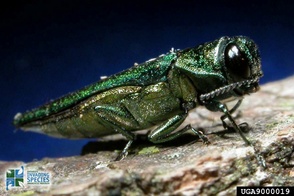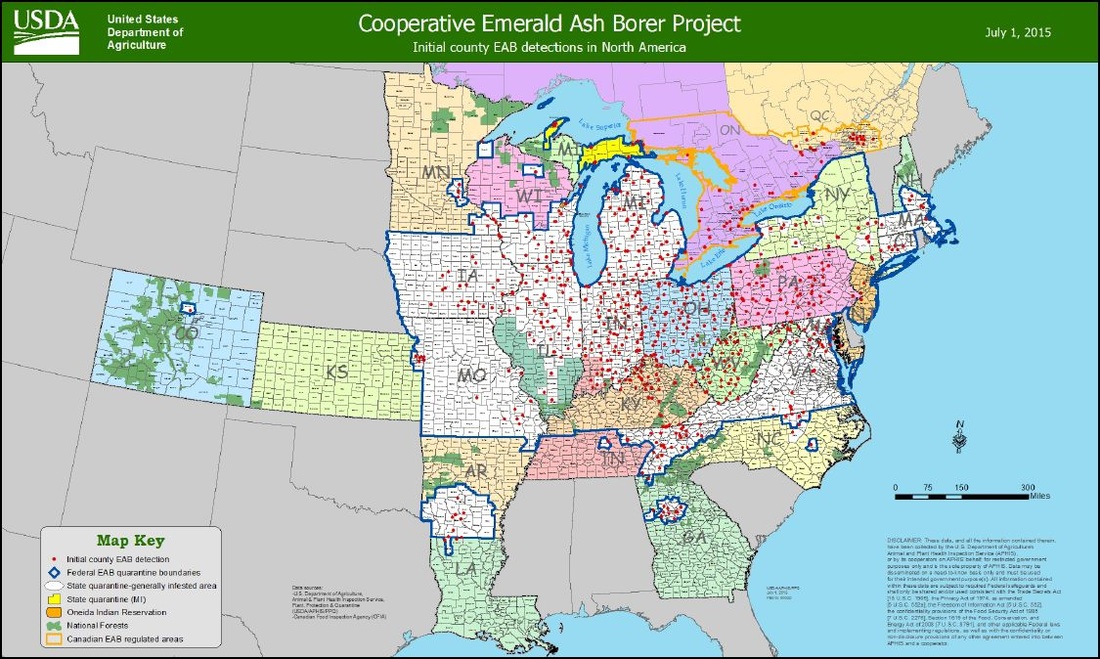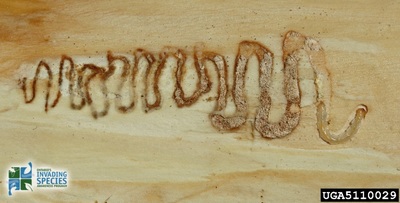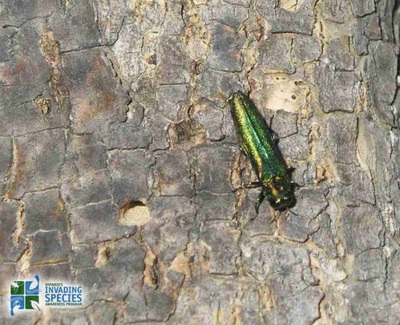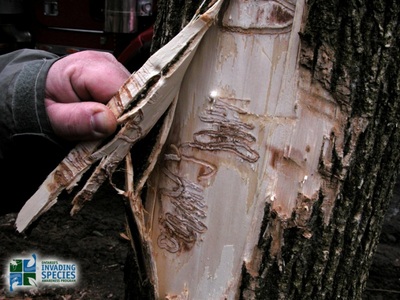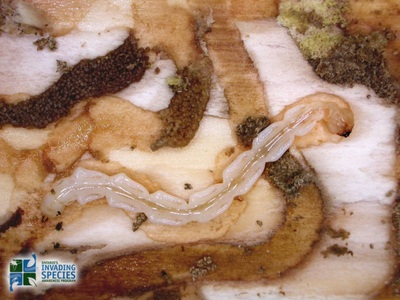Emerald Ash Borer
|
|
The emerald ash borer is a forest pest native to Asia that has killed millions of ash trees in southwestern Ontario, and the Great Lakes States. Due to its major economic and environmental threat, the Canadian Food Inspection Agency has prohibited the movement of firewood and any material made from Ash trees outside of designated areas under an Infested Places Order.
|
Range
|
The emerald ash borer was first discovered in North America in 2002. It is thought to have been shipped to Canada in untreated wooden packaging materials. The range of emerald ash borer in Ontario is rapidly expanding through the movement of infested materials. Please refer to the map below, courtesy of the USDA and the Cooperative emerald ash borer project, to view the most recent range and spread of the Emerald ash borer throughout North America.
|
|
Impacts of Emerald Ash Borer
|
How to Identify Emerald Ash Borer
|
What You Can Do |
|
OFAH/OMNR Invading Species Awareness Program. (2012). Emerald Ash Borer. Retrieved from:http://www.invadingspecies.com. This factsheet may be reproduced for non-commercial purposes.

